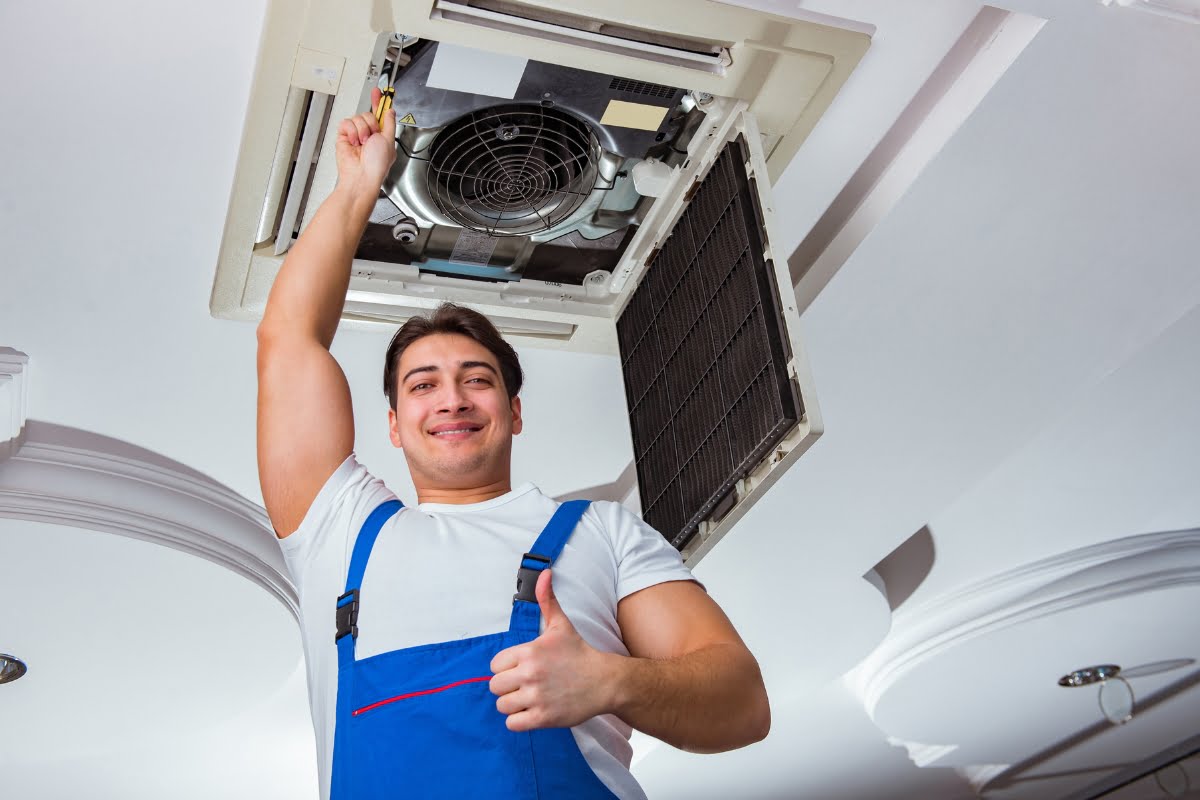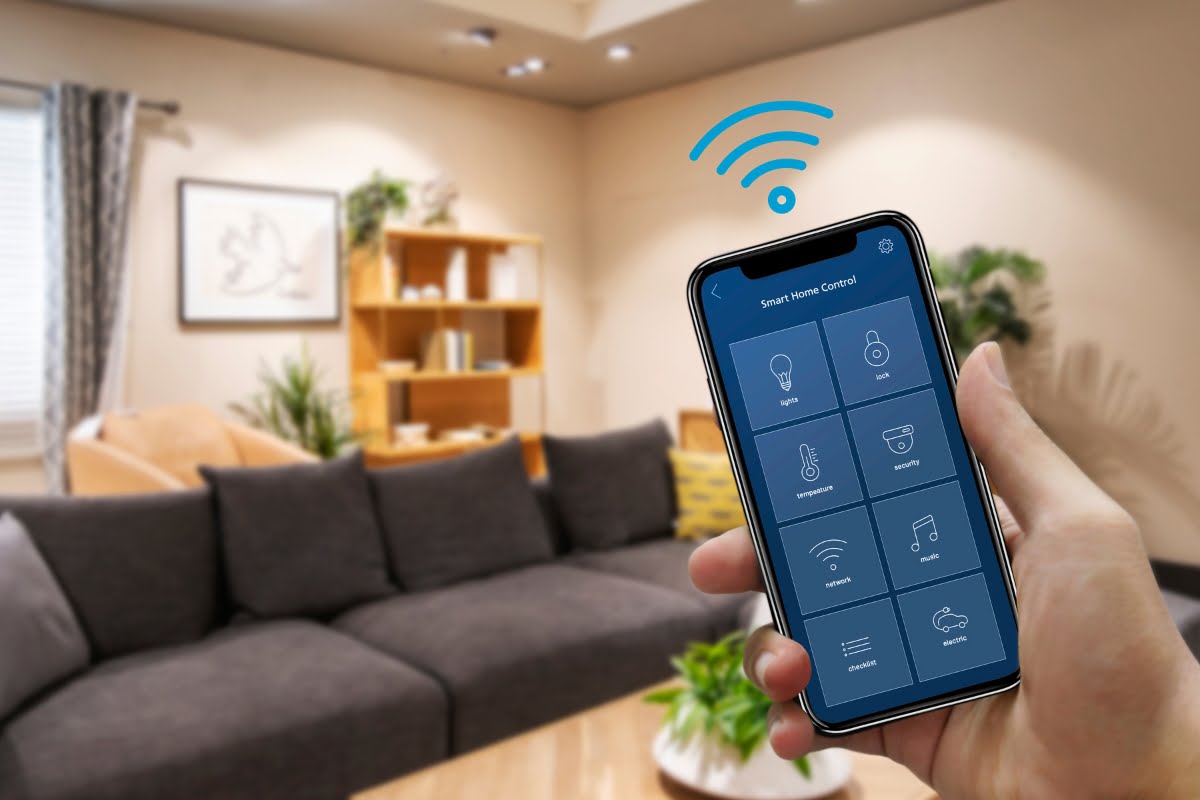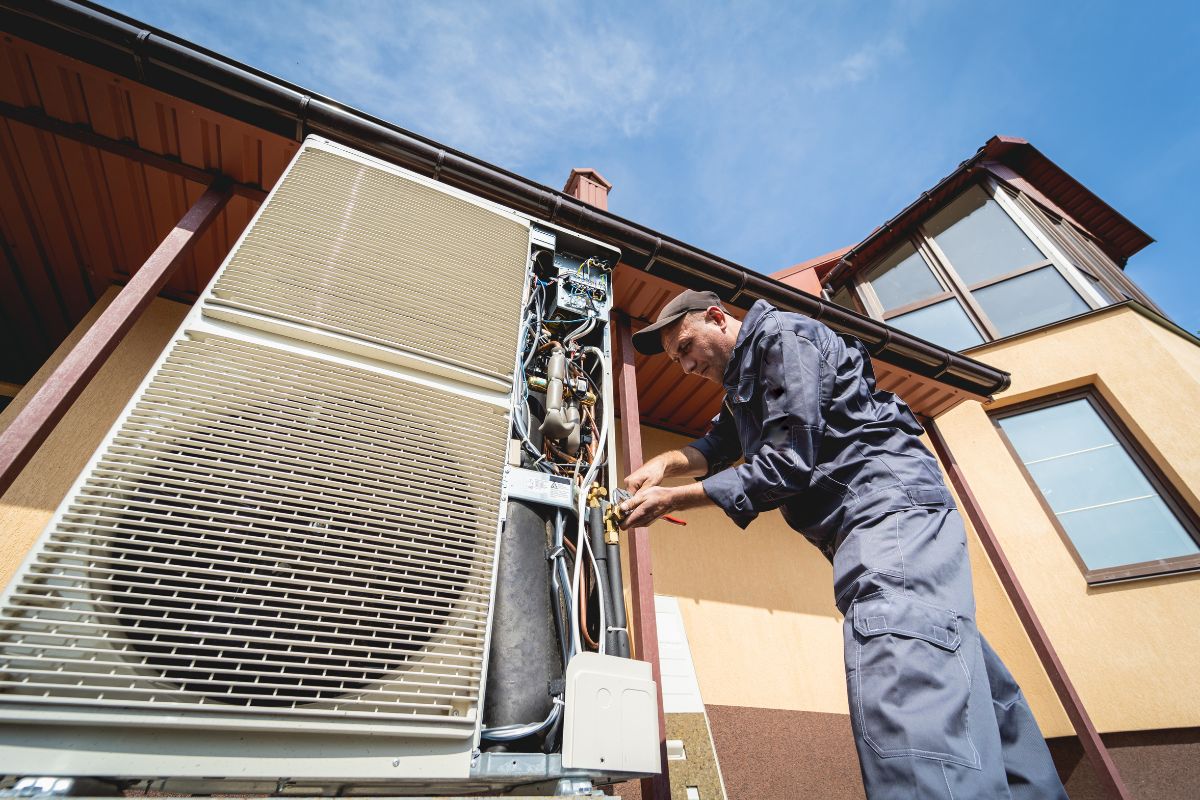As the impacts of climate change become more pronounced, there is an increasing need for innovative solutions that promote energy efficiency and sustainability in our everyday lives. HVAC systems, which account for a significant portion of energy consumption in residential and commercial buildings, are at the forefront of this green revolution.
HVAC climate change technology is evolving to provide environmentally friendly cooling solutions that help reduce carbon footprints while maintaining comfort. In this guide, we’ll explore the latest advancements in HVAC technology designed to combat climate change, from energy-efficient systems and smart thermostats to renewable energy integration and advanced heat pumps.
Discover how these innovations can green your grid, lower your energy costs, and keep you cool as we embrace a more sustainable future. Whether you’re a homeowner, business owner, or HVAC professional, learn how to make eco-conscious choices that benefit both the planet and your comfort.
Stay Cool, Save the Planet: Exploring Heating and Air Technology
Advanced Refrigerants: Reducing Greenhouse Gas Emissions

One of the key contributors to climate change is the emission of greenhouse gases, particularly from the use of refrigerants in HVAC systems.
Traditional refrigerants, such as hydrofluorocarbons (HFCs), have a high global warming potential and can significantly contribute to the depletion of the ozone layer. However, with the advent of advanced refrigerants, HVAC systems are becoming more environmentally friendly.
New refrigerants, such as hydrofluoroolefins (HFOs) and natural refrigerants like carbon dioxide (CO2) and ammonia (NH3), have a much lower impact on global warming compared to their predecessors. These advanced refrigerants not only provide efficient cooling but also help reduce greenhouse gas emissions. By transitioning to these eco-friendly alternatives, HVAC systems can play a crucial role in mitigating climate change.
Furthermore, advancements in technology have led to improved system designs that minimize refrigerant leaks and enhance overall energy efficiency. By reducing leakage rates and optimizing system performance, HVAC systems can further contribute to reducing greenhouse gas emissions.
Smart Thermostats: Adapting to Your Lifestyle for Energy Efficiency

Gone are the days when thermostats were simple devices that allowed you to adjust the temperature in your home. With the advent of smart thermostats, HVAC systems have become more intelligent and energy-efficient than ever before.
Energy efficiency is at the core of smart thermostats’ functionality. By adapting to your lifestyle, these intelligent devices learn your behavior patterns and adjust your home’s temperature accordingly. This not only keeps you comfortable but also helps in reducing energy waste.
Smart thermostats utilize advanced sensors and algorithms to learn your daily routine and adjust temperature settings accordingly. They can detect when you’re away from home and automatically adjust the temperature to save energy. Additionally, these devices can be controlled remotely through smartphone apps, allowing you to optimize energy usage even when you’re not at home.
Air conditioning climate change technology focuses on optimizing energy usage to combat environmental challenges. Smart thermostats are a key component of this strategy, providing real-time data and insights to make informed decisions about energy consumption.
Integrated HVAC Systems: Transforming Energy Grids
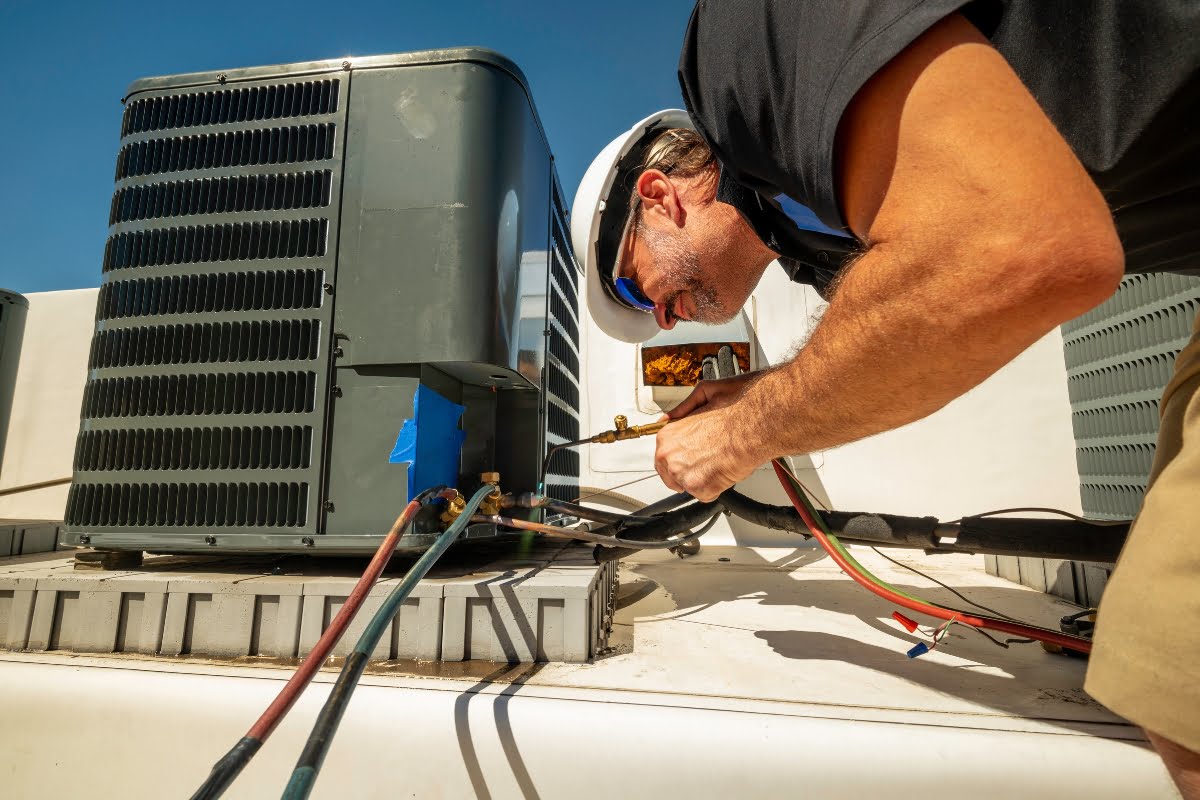
As the demand for energy continues to rise, it is crucial to develop sustainable solutions that can integrate with existing energy grids. Integrated HVAC systems are at the forefront of this transformation, offering a seamless connection between buildings and the energy infrastructure.
These systems leverage advanced communication technologies to interact with the grid in real-time. By intelligently managing energy consumption based on grid conditions, integrated HVAC systems can optimize efficiency and reduce strain on the power supply during peak demand periods. This is achieved through features such as automated adjustments in heating and cooling output and the integration of smart thermostats that learn user preferences and adapt accordingly.
Moreover, these systems can also participate in demand response programs, where they adjust their energy usage in response to signals from the grid operator. By actively contributing to grid stability and load balancing, integrated HVAC systems play a vital role in creating a more resilient and sustainable energy infrastructure.
Additionally, integrated HVAC systems can incorporate renewable energy sources, such as solar panels or wind turbines, further reducing reliance on traditional power sources. These systems can store excess energy generated during low-demand periods and use it during peak times, enhancing energy efficiency and reducing utility costs. By embracing integrated HVAC systems, we pave the way for smarter cities, where energy consumption is managed holistically, contributing to a greener future.
Furthermore, the adoption of integrated HVAC systems can drive innovation in building design and energy management, encouraging the development of new technologies that enhance both comfort and sustainability. This transformation not only benefits the environment but also provides long-term economic advantages for businesses and homeowners by reducing energy costs and improving system reliability.
Renewable Energy Integration: Harnessing HVAC Technology
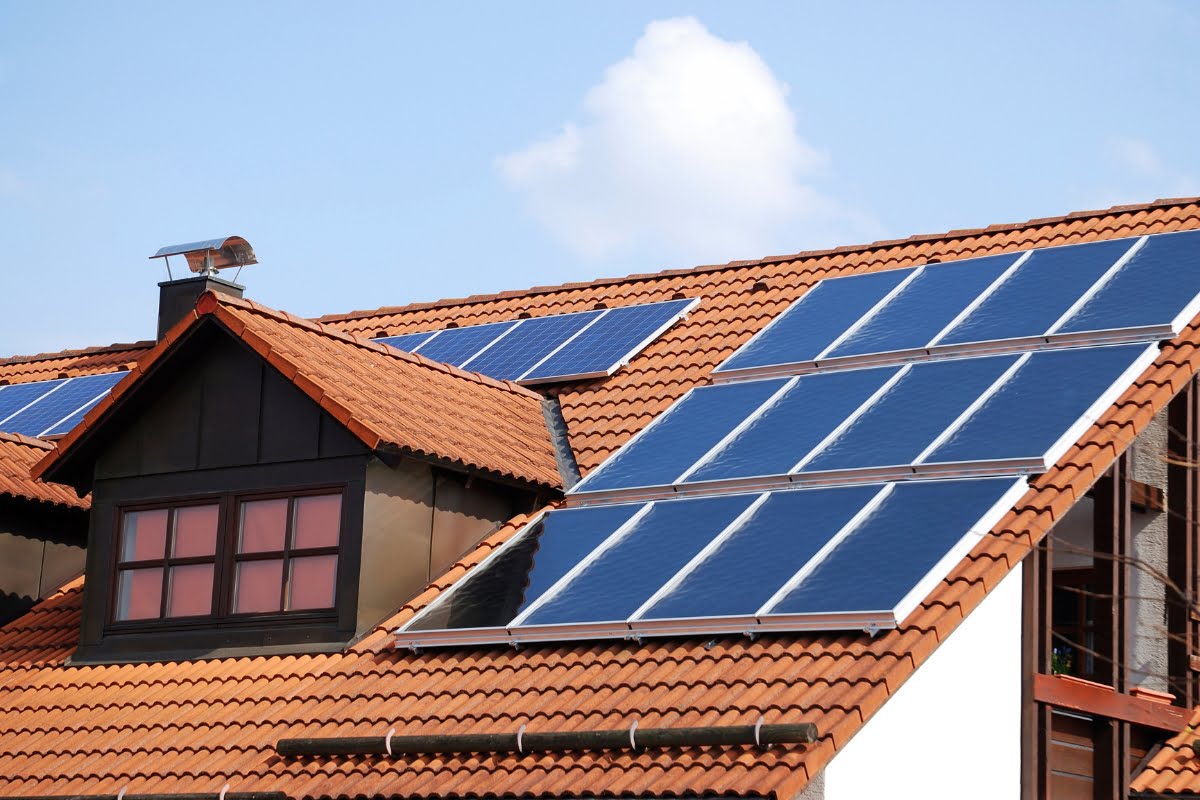
The integration of renewable energy sources, such as solar and wind power, is essential for reducing reliance on fossil fuels and combating climate change. HVAC technology plays a significant role in enabling this transition by facilitating the efficient utilization of renewable energy.
Renewable energy sources are inherently intermittent, meaning their output fluctuates based on weather conditions. HVAC systems equipped with advanced controls can dynamically adjust their operation to align with renewable energy availability. For example, during periods of high solar generation, an HVAC system can increase cooling or heating operations to utilize excess electricity generated by solar panels.
This integration not only maximizes the utilization of renewable resources but also helps stabilize the grid by balancing supply and demand. By harnessing HVAC technology for renewable energy integration, we can accelerate the adoption of clean energy sources while minimizing environmental impact.
Energy-Efficient Cooling Solutions: Sustainability in Action

Cooling is a significant contributor to energy consumption, especially in regions with hot climates. Energy-efficient cooling solutions are crucial for reducing HVAC’s carbon footprint and ensuring sustainable development.
Advancements in cooling technologies, such as variable refrigerant flow (VRF) systems and evaporative cooling, have significantly improved energy efficiency. VRF systems utilize advanced heat pump technology to deliver precise cooling or heating to individual zones, minimizing energy wastage. Evaporative cooling, on the other hand, utilizes the natural process of water evaporation to provide efficient and eco-friendly cooling.
By adopting these energy-efficient cooling solutions, HVAC systems can significantly reduce their energy consumption and contribute to climate change mitigation efforts. These technologies not only save energy but also enhance comfort levels and indoor air quality.
Eco-Friendly HVAC Design: From Concept to Reality

The design phase of HVAC systems plays a crucial role in determining their environmental impact. Eco-friendly HVAC design principles focus on maximizing energy efficiency, minimizing material waste, and optimizing system performance.
Building designs that incorporate passive cooling strategies, such as natural ventilation and shading, can reduce the reliance on mechanical cooling systems. Additionally, proper insulation and sealing techniques help prevent air leakage and improve overall system efficiency.
Furthermore, sustainable material choices during construction can minimize the environmental footprint of HVAC systems. For example, using recycled or low-emission materials reduces resource consumption and promotes a greener building industry.
Policy and Regulation: Driving Green HVAC Innovation

Policies and regulations play a vital role in driving the adoption of green HVAC technologies. By setting clear standards and goals, governments around the world are implementing stringent measures aimed at reducing greenhouse gas emissions from HVAC systems, encouraging the development and deployment of more sustainable solutions.
One of the most impactful regulatory strategies is the mandatory phase-out of high global warming potential refrigerants, such as hydrofluorocarbons (HFCs). These substances have been widely used in HVAC systems but contribute significantly to climate change due to their high global warming potential. In response, governments are enforcing regulations that promote the use of eco-friendly alternatives, such as hydrofluoroolefins (HFOs) and natural refrigerants like ammonia and carbon dioxide, which have a much lower environmental impact. This shift not only helps reduce greenhouse gas emissions but also spurs innovation in refrigerant technology.
Additionally, energy efficiency standards for HVAC equipment are continuously being updated to encourage the adoption of energy-saving technologies. For example, initiatives such as the European Union’s Ecodesign Directive and the U.S. Department of Energy’s energy conservation standards mandate specific efficiency levels for HVAC products. These standards push manufacturers to develop systems that consume less energy while maintaining or improving performance. By setting ambitious targets for energy efficiency, policymakers ensure that HVAC systems contribute to a reduction in overall energy consumption, thereby decreasing reliance on fossil fuels and lowering carbon emissions.
Government incentives and rebates further support the transition to green HVAC systems. Tax credits, grants, and subsidies are offered to businesses and homeowners who invest in energy-efficient HVAC equipment or retrofitting existing systems with eco-friendly upgrades. These financial incentives make it more accessible for consumers to choose sustainable options, ultimately leading to increased demand and market growth for green technologies.
Building codes and regulations also play a crucial role in driving HVAC innovation. As cities and municipalities update their codes to reflect sustainability goals, they require buildings to incorporate energy-efficient systems, better insulation, and advanced HVAC technologies. These building regulations ensure that new constructions and renovations adhere to high environmental standards, fostering a culture of sustainability in urban development.
Beyond environmental benefits, these policies drive economic growth and job creation in the clean technology sector. As demand for green HVAC systems rises, manufacturers invest in research and development to create cutting-edge products. This investment leads to new business opportunities, skilled job creation, and increased competitiveness in the global market.
International cooperation and agreements, such as the Kigali Amendment to the Montreal Protocol, also play a critical role in aligning global efforts to phase out harmful refrigerants and promote sustainable HVAC practices. By working together, countries can share best practices, technology advancements, and regulatory frameworks to accelerate the transition toward a more sustainable future.
In summary, robust policy frameworks and regulations are essential for catalyzing the shift to green HVAC innovation. By creating a supportive regulatory environment, policymakers incentivize manufacturers and consumers to embrace sustainable technologies, contributing to environmental preservation, economic prosperity, and a healthier planet for future generations.
Consumer Awareness and Education: Empowering Sustainable Choices

Consumer awareness and education play a crucial role in promoting sustainable choices in HVAC systems. By understanding the environmental impact of their choices, consumers can make informed decisions that align with their values, ultimately contributing to a healthier planet.
Energy labels and certifications, such as Energy Star and LEED, help consumers identify energy-efficient HVAC products. These labels provide information on energy consumption, efficiency ratings, and environmental performance, enabling consumers to compare different options and choose greener alternatives. By choosing certified products, consumers can reduce their carbon footprint and save on energy costs.
Moreover, educational initiatives can empower consumers with knowledge about sustainable practices such as proper system maintenance, regular filter cleaning or replacement, and optimal temperature settings. By adopting these practices, consumers can maximize system efficiency and reduce energy waste. For instance, understanding how to program a thermostat correctly can lead to significant energy savings by ensuring that heating and cooling systems operate only when necessary.
Workshops, seminars, and online resources can further enhance consumer education by providing hands-on learning experiences and expert advice. These programs can cover a range of topics, from selecting the right heating and air system for specific needs to understanding the benefits of integrating renewable energy sources. By offering these educational opportunities, businesses and organizations can foster a community of informed consumers who are committed to making sustainable choices.
Social media campaigns and partnerships with environmental organizations can also raise awareness about the importance of energy-efficient HVAC systems. By sharing success stories and practical tips, these platforms can inspire consumers to take actionable steps toward sustainability.
In addition to individual actions, consumers can advocate for broader change by supporting policies and initiatives that promote energy efficiency and sustainable practices. By demanding higher standards and accountability from manufacturers and policymakers, consumers can drive innovation and push for a more sustainable future in the HVAC industry.
Conclusion: A Sustainable Path Forward with Green HVAC Solutions
HVAC climate change technology is revolutionizing the way we think about heating, ventilation, and room air conditioners. By embracing these green HVAC solutions, we can not only mitigate climate change but also create a more sustainable and resilient future for generations to come.
By investing in eco-friendly systems, you can reduce your carbon footprint and enjoy a comfortable home environment. For expert advice and installation, choose A.D. Campbell HVAC. Our team specializes in HVAC solutions that meet your cooling needs while contributing to a greener planet. Contact us at (404) 882-8226 or visit our website to fill out a request for our services.



